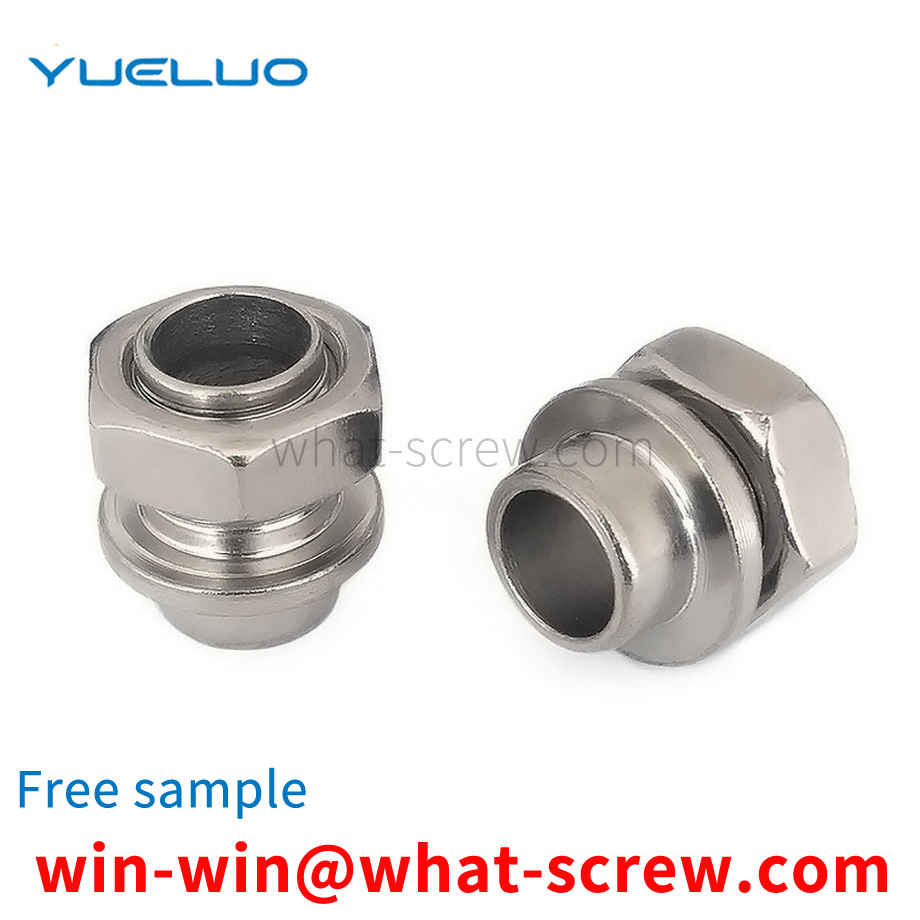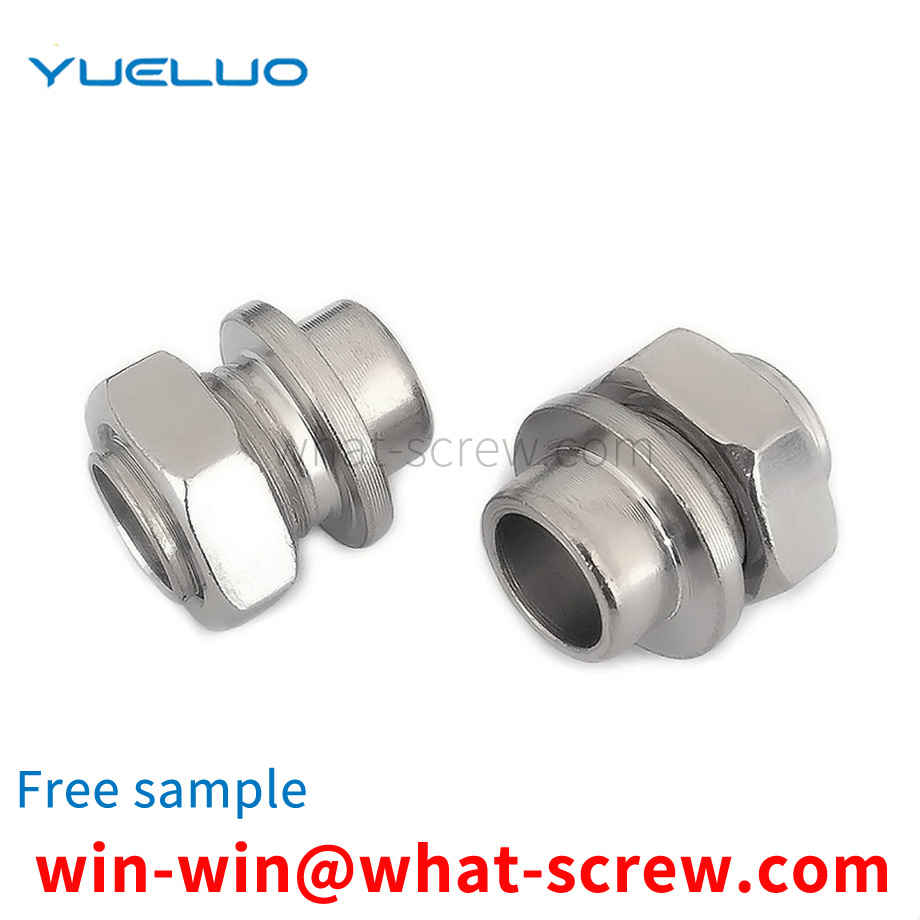Countersunk head screws are mostly used after installation, and the surface of the parts cannot be raised, and the parts to be fastened have two thicknesses. Thickness, after the screw is tightened, there is still a part of the screw thread that does not enter the threaded hole. In this case, the countersunk head screw can definitely be tightened. There is usually a situation where the thickness of the fastened part is less than the height of the head of the countersunk head screw, which is commonly seen in sheet metal parts in mechanical equipment, such as the connection between the hinge of the chassis and the door and the box; the sheet metal of the equipment The connection of the cover to the equipment, etc. Due to the small thickness of the part, the tightened sheet metal part, the screw through hole completely becomes a conical hole, in this case, when the countersunk head screw is tightened, the screw head is not a tapered surface to press the sheet metal part , but the bottom of the screw head and the top of the threaded hole are squeezed. Although it feels that the screw is tightened, the sheet metal part is stuck instead of being pressed. In this case, although it feels that the screw is tightened, the sheet metal The gold pieces were indeed not tightened. This is a very common situation. Let’s talk about the reasons for the processing: the head cone of the countersunk screw has a 90° conical angle, and the apex angle of the newly bought drill is usually 118°-120°. Some workers who lack training do not know this angle is poor. It is often used to ream the hole with a 120° drill bit, which results in that when the countersunk head screw is tightened, it is not the conical surface of the head, but a line at the bottom of the screw head, which is one of the reasons why the so-called countersunk head screw cannot be tightened. , it's not the screw's fault.
The common riveting techniques of non-blind rivets are divided into cold riveting and hot riveting. Cold riveting is a riveting method that uses a rivet rod to partially pressurize the rivet, and continuously swings around the center or the rivet is forced to expand until the rivet is formed. The common cold riveting methods are the pendulum riveting method and the radial riveting method. The pendulum rolling riveting method is easy to understand, and the rivet head only swings and rolls in the circumferential direction.
The combination screw includes a head, a threaded section and a flanging section, the flanging section is arranged below the threaded section, and the flanging section and the threaded section pass through the mounting holes on the fittings, so that the combination screw and the fittings are rotatably connected, so After the flanging section passes through the fitting, the bottom of the flanging section is riveted and pressed so that the bottom of the flanging section is turned outward, so that the combined screw cannot be separated from the fitting.
The shaft and gear of financial self-service equipment are often connected by elastic straight groove cylindrical pins. When repairing, the traditional disassembly method is to use the shaft and gear as components. After disassembling together, align the punch with the elastic pin by hand, and use a hammer to remove the elastic pin. Pin out. With this disassembly method, the human hand is easily injured, and the disassembly efficiency is low.
Material and process requirements The self-tapping locking screw should be made of high-quality carburized steel cold heading, generally no larger than M12. The finished material should be drawn with a high total reduction rate before cold heading, so that the cold heading must be spheroidized. Annealing, in order to enhance the surface hardness and the toughness of the core, most of them are made of medium and low carbon steel. The chemical composition of the material in the standard is only for guidance. The C content is 0.13%~0.37%, the Mn content is 0.64%~1.71%, and the B content can reach 0.005%. The elements of S, P, Mn and Si in the commonly used steel are generally lower than those of the ordinary bolt steel of the same grade. And the surface quality of the material is strictly controlled to reduce deformation resistance and prevent deformation and cracking. Commonly used grades are 20Mn, 15MnB, SWRCH22A, 1022A and medium carbon steel, medium carbon alloy steel SWRCH35K, SCM435, SCR435, etc. Self-tapping locking screws are threads with an arc-shaped triangular cross-section, so the formulation of cold heading and wire rolling processes, as well as the design and manufacture of cold heading dies and special rolling plates are very important. Self-tapping locking screws require a high-hard surface for cutting and extruding capabilities due to the need for self-tapping low carbon steel. At the same time, there must be sufficient core strength and toughness to prevent twisting and breaking during work. The heat treatment process of this type of screw belongs to shallow carburizing. Regardless of whether it is made of low carbon steel or medium carbon or medium carbon alloy steel, its core hardness must be guaranteed to be within the range of 28~38HRC (9.8 grade) 33~39HRC (10.9 grade) and not less than the minimum tensile load of 930MPa (9.8 grade), 1040MPa (grade 10.9), depending on the material, the minimum tempering temperature is 420℃. In order to ensure that the self-tapping locking screw can be smoothly screwed into the prefabricated cylindrical hole, the end of the screw should be hardened by high-frequency quenching to ensure that at least one to three thread teeth are hardened, and the minimum surface hardness is 45HRC.
We have many years of experience in the production and sales of screws, nuts, flat washers, etc. The main products are: hexagon socket head bolts, GB5783 screws, plastic cap nuts, box screws and other products, we can provide you with suitable fastener solutions for you .



















 Service Hotline
Service Hotline




